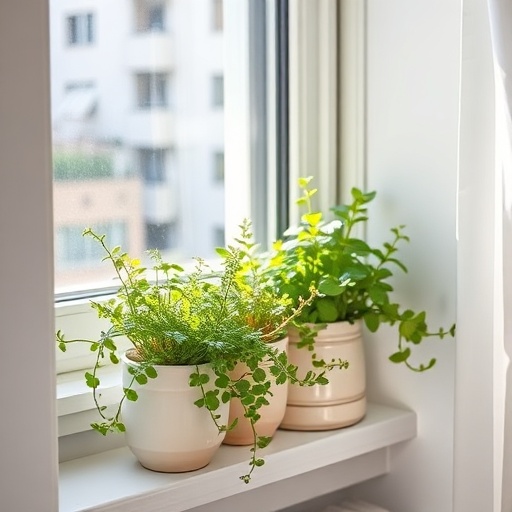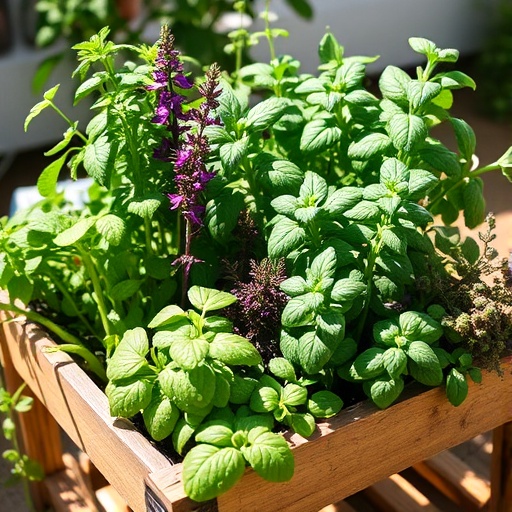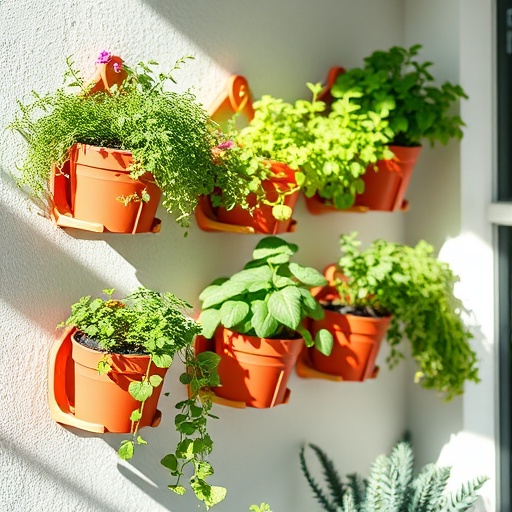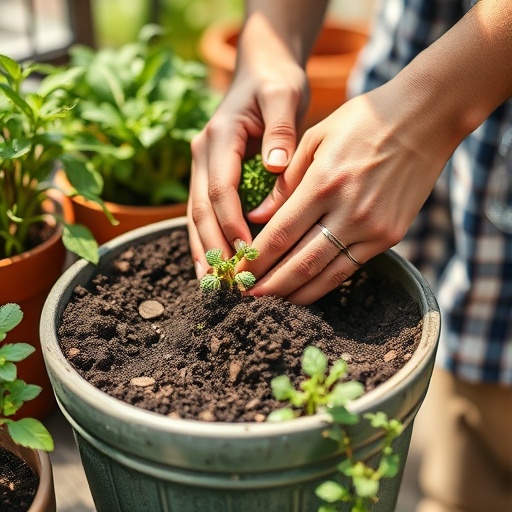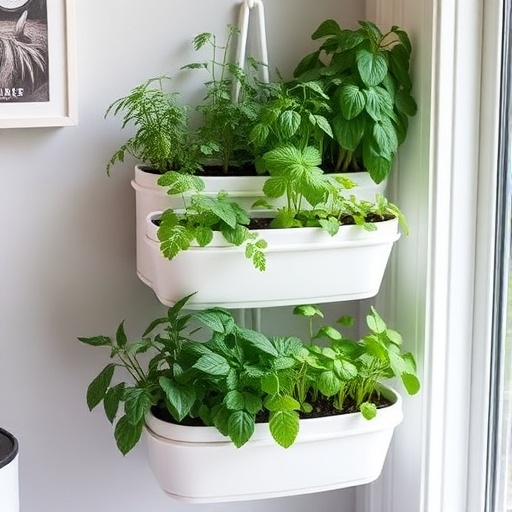Introduction
Have you ever considered that a thriving green oasis isn't exclusive to sprawling backyards or sun-drenched greenhouses? What if I told you that with a few simple steps and readily available resources, anyone—yes, even you, the absolute beginner—can cultivate a flourishing indoor gardening setup right in their living space? The myth that gardening requires extensive land or perfect weather conditions is precisely that: a myth. Data suggests that over 35% of U.S. households now engage in some form of indoor gardening, and that number is steadily climbing, proving that green thumbs can indeed blossom anywhere. This comprehensive guide will demystify the process, offering a data-backed, easy-to-follow blueprint for establishing your very own indoor garden, proving that lush greenery and fresh produce are just an apartment window away.
Tools & Materials Needed
Embarking on your indoor gardening journey requires a thoughtful selection of tools and materials. Think of these as your foundational components for a successful and enjoyable experience.
- Pots/Containers: Choose pots with drainage holes at the bottom to prevent root rot. Terra cotta pots are excellent for plants that prefer drier soil as they allow for better airflow, while plastic pots retain moisture more effectively. For eco-conscious growers, consider repurposing old plastic containers, tin cans, or even milk jugs after adding drainage holes.
- Potting Mix: This isn't just dirt from your backyard! A high-quality potting mix is crucial for indoor plants. Look for mixes specifically designed for containers, often containing peat moss, perlite, and vermiculite for aeration and moisture retention. For a budget-friendly and sustainable option, you can create your own by mixing compost (for nutrients), coco coir (for moisture), and perlite (for drainage).
- Seeds or Starter Plants: Decide what you want to grow. Herbs like basil, mint, and cilantro are fantastic for indoor gardening beginners, as are leafy greens like lettuce and spinach. Small fruiting plants like cherry tomatoes or dwarf peppers can also thrive indoors with adequate light.
- Grow Lights (Optional but Recommended): While a sunny windowsill works for some plants, grow lights ensure consistent, optimal light for all your indoor gardening endeavors, especially during shorter winter days. LED grow lights are energy-efficient and mimic natural sunlight effectively.
- Watering Can: A small watering can with a long, slender spout allows for precise watering, preventing soil disruption and overwatering.
- Small Hand Trowel and Pruners: Essential for planting, repotting, and trimming. Look for stainless steel tools for durability.
- Spray Bottle: Perfect for misting plants that enjoy high humidity, such as ferns or tropical varieties.
Time & Effort Overview
Starting an indoor gardening project is surprisingly time-efficient, making it perfect for busy schedules. Initial setup typically takes about 1-2 hours, depending on the number of plants. This includes pot preparation, planting, and setting up any grow lights.
Compared to outdoor vegetable gardens, which often demand several hours of weekly maintenance, an indoor herb garden or small plant collection requires significantly less. You'll likely spend 15-30 minutes per week on watering, feeding, and light pruning. For instance, growing basil indoors often yields harvestable leaves within 3-4 weeks, roughly 25% faster than many typical outdoor herb varieties when conditions are optimized with grow lights.
The difficulty level for most beginner indoor gardening setups is squarely beginner. With resilient plants and a bit of attention, success is almost guaranteed!
Step-by-Step Gardening Process
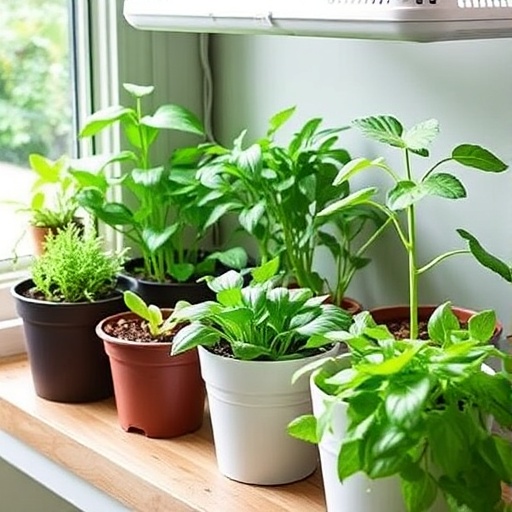
Prepare Your Containers
First things first, gather your chosen pots. Ensure each one has at least one drainage hole at the bottom. If not, you’ll need to create them using a drill for plastic or ceramic, or a hammer and nail for tin cans. This step is non-negotiable! Lack of drainage is the number one killer of indoor plants. Place a small piece of mesh or a coffee filter over the drainage hole to prevent soil from washing out while still allowing water to escape.
Fill with Potting Mix
Carefully fill your containers with the high-quality potting mix you selected. Leave about an inch or two of space from the rim. Don't compact the soil too much; it needs to remain loose and airy to allow roots to grow and water to drain properly. This light, fluffy texture is crucial for healthy root development in your indoor gardening setup.
Plant Your Seeds or Starter Plants
For Seeds: Create a small indentation in the center of the soil, following the depth instructions on your seed packet (usually 1/4 to 1/2 inch deep). Place 2-3 seeds per pot to ensure germination, then lightly cover them with soil. Gently mist the top layer of soil to moisten it. Don’t worry if not all seeds sprout; you can thin them out later.
For Starter Plants: Gently remove the plant from its nursery pot. Loosen any tightly bound roots at the bottom. Create a hole in your new pot large enough to accommodate the root ball. Place the plant in the hole, ensuring the top of the root ball is level with the surrounding soil. Backfill with potting mix, gently patting it down around the base of the plant.
Water Thoroughly
After planting, give your plants a good, thorough watering. Water until you see it draining from the bottom of the pot. This indicates that the entire root ball or seed area has been moistened. For initial watering, a gentle shower from your watering can is ideal.
Provide Adequate Light
Position your newly planted containers in a location that receives ample sunlight, ideally 6-8 hours a day for most herbs and vegetables. A south-facing window is often best. If natural light is scarce, this is where your grow lights come in. Place them a few inches above your plants, adjusting the height as they grow. Most beginner plants thrive under 12-14 hours of artificial light daily.
Monitor and Maintain
Check your plants daily for signs of growth, pests, or watering needs. This consistent attention is key to successful indoor gardening. Observe the soil moisture, leaf color, and overall vigor of your plants. Here's how to fix common issues: yellowing leaves often indicate overwatering, while wilting might mean underwatering. A quick check of soil moisture by sticking your finger about an inch deep will usually tell you what's needed.
Growth & Care Tips
Consistent care is the bedrock of a thriving indoor garden. Understanding the needs of your specific plants is critical for optimal growth.
- Watering Frequency: This is perhaps the most common challenge in indoor gardening. Generally, water when the top inch of soil feels dry to the touch. For most indoor plants, this could be every 3-7 days. However, humidity, pot size, and plant type all affect this. Overwatering is a leading cause of plant demise, with studies suggesting it causes root rot in nearly 60% of houseplants. Always err on the side of underwatering rather than overwatering.
- Sunlight Exposure: Most edible plants require 6-8 hours of direct sunlight. Place them in your brightest window (south-facing is ideal in the Northern Hemisphere). If natural light is insufficient, invest in a full-spectrum LED grow light. Position lights 6-12 inches above plant foliage and run them for 12-14 hours daily. Lack of adequate light often leads to leggy, weak growth.
- Pruning: Regular pruning encourages bushier growth and higher yields. For herbs, simply snip off the top few leaves or flower buds to prevent them from "bolting" (going to seed), which can make them less flavorful. This strategic trimming directs the plant's energy into producing more leaves.
- Fertilization: Indoor plants deplete soil nutrients over time. Start fertilizing about 4-6 weeks after planting, using a balanced liquid fertilizer diluted to half strength, typically once every 2-4 weeks during the growing season. Reduce or stop fertilizing in winter when growth slows. Look for organic, slow-release options for sustained nutrition.
- Pest Prevention: Indoor environments can still attract pests. Inspect your plants regularly for tiny bugs (spider mites, aphids, fungus gnats). If you spot any, isolate the plant immediately and treat it with an organic insecticidal soap or neem oil spray. Maintaining good air circulation and not overwatering helps prevent many pest issues.
Eco-Friendly & Sustainable Alternatives
Make your indoor gardening not just productive but also planet-friendly.
- Composting: Start a small indoor compost bin (worm bin or Bokashi system) for kitchen scraps. The "black gold" compost produced is an incredible, nutrient-rich, free fertilizer for your plants. It reduces waste and enriches your soil, closing the loop on your kitchen and garden.
- Natural Fertilizers: Beyond compost, consider using diluted coffee grounds (acid-loving plants), banana peel tea (potassium boost), or even aquarium water (fish waste provides nitrogen) as natural, DIY fertilizers.
- Water Conservation: Collect rainwater or use leftover water from cooking vegetables (once cooled) to water your plants. This reduces tap water usage and provides beneficial nutrients. Consider self-watering planters or terracotta watering spikes to deliver water slowly and efficiently, minimizing waste and evaporation.
- Alternatives for Small Spaces:
- Balcony Gardens: If you have a balcony, even a small one, it’s an extension of your indoor gardening space. Consider vertical planters, hanging baskets, or narrow shelves to maximize plant density.
- Vertical Gardens: Wall-mounted planters or tiered shelving units are ideal for maximizing growing area in tiny apartments. Many systems are designed specifically for indoor use.
- Repurposed Containers: As mentioned earlier, give a second life to plastic bottles, coffee cans, or old laundry detergent containers. Just ensure proper drainage. This reduces waste and adds a unique, crafty touch to your indoor garden.
Creative Ideas & Uses
Indoor plants aren't just for growing food; they're living art!
- Decorate with Plants: Group plants of varying heights and textures together to create visual interest. Use attractive planters that match your interior decor. A trailing plant like a Pothos cascading from a high shelf can add dramatic effect, while a cluster of succulents on a coffee table brings a touch of modern minimalism.
- Repurpose Garden Materials: Old, charming watering cans can become decorative elements. Unused glass jars or bottles can be transformed into propagation stations for new cuttings. Driftwood or interesting stones collected on walks can be incorporated into your plant displays to create miniature landscapes.
- Combine Plants Aesthetically: Think about color, leaf shape, and growth habit. For example, pair the broad leaves of a prayer plant with the delicate fronds of a maidenhair fern for a lush, leafy contrast. Create a "kitchen herb garden" on a windowsill, arranging different herbs in matching pots for both beauty and utility. Consider a living wall with various succulents and air plants for a stunning, low-maintenance focal point.
- Design Ideas: Minimalist planters for a modern look, rustic wooden crates for a farmhouse feel, or vibrant ceramic pots for a bohemian vibe. Use plant stands to add height variation and layer your greenery. Even a small corner can be transformed into a calming green sanctuary.
Common Mistakes to Avoid
Even seasoned gardeners make mistakes, and indoor gardening has its own unique pitfalls. Being aware of these can save your plants – and your sanity!
- Overwatering: This is by far the most common mistake for beginners. Many new gardeners believe more water equals healthier plants. The opposite is often true indoors. Overwatering suffocates roots, leading to root rot, which, as mentioned, affects 60% of houseplants. Always check soil moisture before watering.
- Insufficient Light: While indoor plants don't face harsh outdoor sun, they still need ample light. Placing a plant too far from a window or neglecting grow lights will lead to "legginess" (stretched, weak stems searching for light) and poor growth. Most edible plants need at least 6 hours of bright, direct light daily.
- Using Garden Soil: Garden soil is heavy and compacts easily in pots, suffocating roots and hindering drainage. It can also harbor pests and diseases not suitable for an indoor environment. Always use a dedicated potting mix designed for containers for your indoor garden.
- Neglecting Drainage: Pots without drainage holes are death traps for indoor plants. Excess water has nowhere to go, leading to waterlogged soil and root rot. Ensure every pot has adequate drainage.
- Ignoring Pests: Pests can spread quickly in an enclosed indoor environment. Regularly inspect the undersides of leaves and stems. Catching infestations early makes them much easier to manage. Early intervention prevents them from becoming a major problem that requires drastic measures.
- Lack of Humidity: Many popular houseplants, particularly tropical varieties, thrive in higher humidity than typical household air provides, especially in winter with heating systems on. Low humidity can lead to crispy leaf edges or pest issues like spider mites. Misting, pebble trays, or a humidifier can help.
Maintenance & Storage Tips
Long-term success in indoor gardening involves proactive maintenance and smart storage solutions.
- Repotting: As your plants grow, they may become "root-bound," meaning their roots have filled the pot and are circling the bottom. This can stunt growth. Repot plants into a slightly larger container (1-2 inches wider) annually or every two years, usually in spring. Signs include water running straight through or roots emerging from drainage holes.
- Seasonal Care: Adjust your care routines with the seasons. In winter, plants typically go through a dormant phase: they require less water and fertilizer. In spring and summer, when growth is active, increase watering and resume fertilizing. Pay attention to how light changes with the seasons and adjust grow lights or plant placement accordingly.
- Preventing Yellow Leaves: Yellowing leaves are often a distress signal. Common causes include overwatering (most frequent), underwatering, nutrient deficiencies, or insufficient light. Examine the soil moisture, check for pests, and review your watering and fertilizing schedule.
- Dealing with Poor Soil Drainage: If your current potting mix retains too much water, you might need to amend it. Add more perlite or coarse sand to improve drainage and aeration. For severe cases, repotting with a more appropriate mix is the best solution.
- Seed Storage: If you have leftover seeds, store them in a cool, dry, dark place in an airtight container. This preserves their viability for several seasons. Label them clearly with the type of seed and date of purchase.
- Tool Maintenance: Clean your gardening tools after each use. Wipe off soil and sterilize pruners with rubbing alcohol to prevent the spread of diseases between plants. This small habit prolongs the life of your tools and keeps your plants healthy.
Conclusion
Embarking on your indoor gardening journey is a rewarding endeavor that brings nature's calm and bounty into your home. By following these data-driven, step-by-step guidelines for setting up and caring for your plants, you're not just growing greenery; you're cultivating a healthier, more vibrant living space. From selecting the right tools and understanding optimal light to mastering watering, you now possess the foundational knowledge to transform any corner of your home into a thriving indoor oasis. Remember, every expert gardener was once a beginner, and every small step you take nurturing your plants contributes to a larger journey of connection with nature.
Ready to dig in? Start planting today and share your growing successes with us! We'd love to see your progress – tag us on social media with #MyIndoorGreenery. For more personalized inspiration, check out our curated Pinterest boards for stunning plant decor ideas: https://www.pinterest.com/janatjanay47/.
FAQ
Q1: What are the easiest plants for indoor gardening beginners?
A1: For starting your indoor gardening adventure, herbs like basil, mint, and chives are incredibly forgiving. Leafy greens such as lettuce and spinach also thrive easily. Snake plants, Pothos, and ZZ plants are excellent choices for decorative indoor plants due to their low light and watering requirements.
Q2: How much light does an indoor garden need?
A2: Most edible indoor gardening plants, such as herbs and vegetables, require 6-8 hours of bright, direct light daily. If natural light isn't sufficient, full-spectrum LED grow lights are a fantastic solution, typically set for 12-14 hours a day to mimic optimal growing conditions.
Q3: How often should I water my indoor plants?
A3: The golden rule for indoor plants is to water when the top inch of soil feels dry. Stick your finger into the soil to check. This usually translates to every 3-7 days for most plants, but it varies based on plant type, pot size, and indoor humidity. Overwatering is a common mistake in indoor gardening!
Q4: Can I use regular garden soil for indoor gardening?
A4: No, it's highly recommended to use a specialized potting mix for indoor gardening. Garden soil is too dense, can compact in pots, and may contain pests or diseases that aren't ideal for an indoor environment. Potting mix is lighter, offers better drainage, and provides appropriate aeration for roots.
Q5: What are common signs that my indoor plant isn't happy?
A5: Yellowing leaves often indicate overwatering or nutrient deficiency. Drooping leaves can signal either extreme (under or overwatering). Stretched, leggy growth usually means the plant isn't getting enough light. Brown, crispy leaf edges often point to low humidity. Observing these signs can help you course-correct quickly in your indoor gardening efforts.
Q6: Are there any effective natural pest controls for indoor plants?
A6: Absolutely! For minor infestations, a solution of insecticidal soap (diluted dish soap is a common DIY option) or neem oil spray can be very effective. Introducing beneficial insects like ladybugs (for aphids) can also work, but is more common in larger, enclosed greenhouse setups. Always isolate affected plants immediately.
Q7: How do I improve air circulation for my indoor garden?
A7: Good air circulation helps prevent fungal diseases and deters pests. You can improve it by ensuring plants aren't too crowded, pruning excess foliage, and occasionally using a small oscillating fan on a low setting nearby. This small step significantly contributes to a healthy indoor gardening environment.
Looking to expand your gardening horizons? Dive deeper into related topics with these guides:
- Ready to learn the basics? Our Beginner's Guide to Greenhouse Gardening offers a comprehensive look at starting your journey.
- For those with culinary ambitions, discover the Best Herbs to Grow Indoors that will flourish in your indoor garden.
- Struggling with gloomy corners? Explore the Best Low-Light Indoor Plants for Every Room to brighten up shaded spaces.
- If you're tight on space, get inspired by Vertical Indoor Garden Ideas for Small Spaces to maximize your green footprint.
- Bring life and natural beauty into your living areas with Creative Indoor Plant Decor Ideas, transforming your home into a verdant sanctuary.
